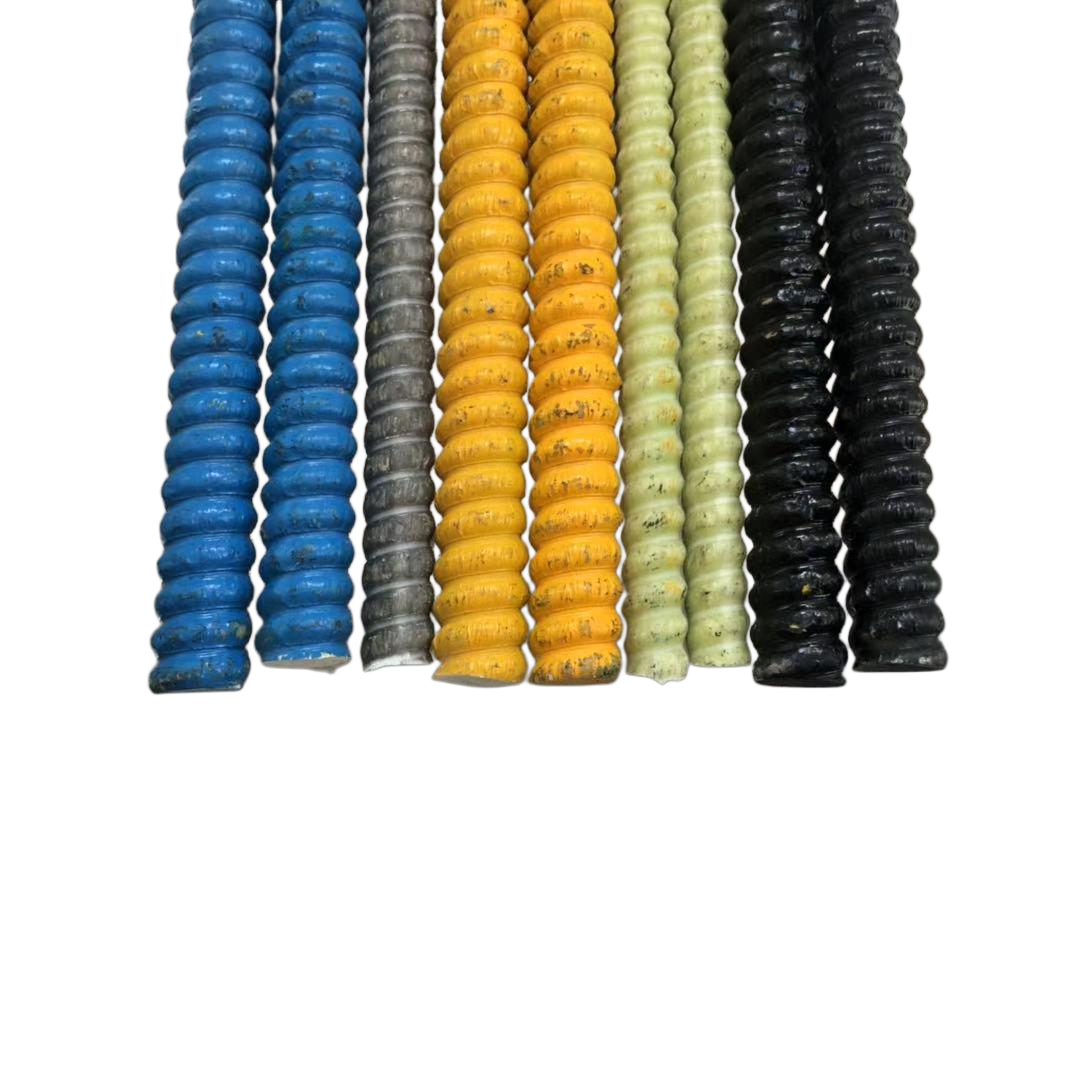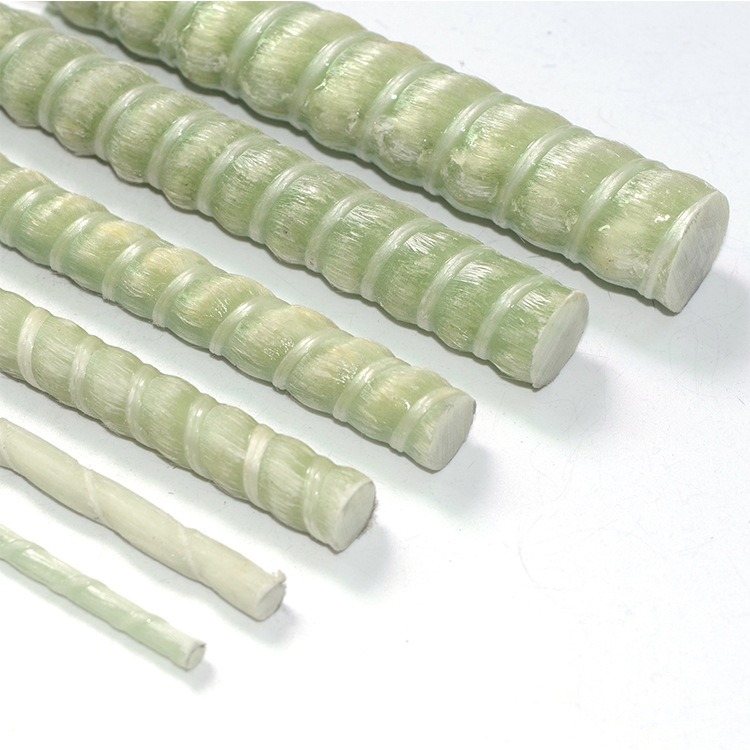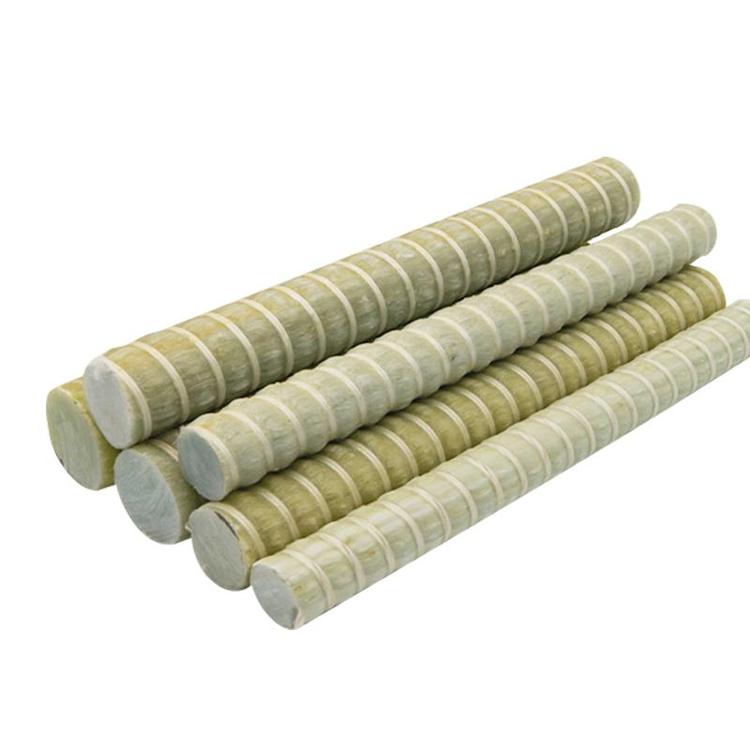Analysis of Methods for Enhancing the Bond Strength between Fiberglass Reinforcement and Concrete and the Effects of Surface Treatment Processes
1、 The core method for improving bonding strength
Optimization of surface treatment process
Sandblasting treatment:
Mechanism: By high-pressure sandblasting, concave and convex textures are formed on the surface of glass fiber reinforcement, increasing the contact area with concrete and enhancing mechanical biting force.
Effect: Experiments have shown that sandblasting treatment can increase bond strength by 20% -30%, especially in UHPC (ultra-high performance concrete) where the effect is more significant.
Wrapping treatment (spiral rib):
Mechanism: Using fiber bundles to spiral wrap the reinforcement material, forming a transverse rib structure that mechanically engages with the concrete.
Effect: The bonding strength of GFRP wrapped reinforcement is 40% -60% higher than that of threaded reinforcement, and its stability under dynamic loads is better.
Sticky sand treatment:
Mechanism: Fine sand adheres to the surface of the reinforcement material, forming a rough surface and enhancing friction.
Effect: The sand bonding treatment can improve the bonding strength by 15% -25%, but the uniformity of sand particle adhesion needs to be strictly controlled.
Optimization of materials and mix proportions
High performance adhesive: By using modified epoxy resin and other high viscosity and high elasticity adhesives, the bonding strength can be increased by more than 30%.
Concrete strength improvement: For every 10 MPa increase in compressive strength of UHPC, the bond strength can increase by 5% -8%.
Increase in protective layer thickness: For every 0.1 increase in relative protective layer thickness (c/db), the bonding strength increases by 10% -15%.
Construction process improvement
Anchor length control: It is recommended that the minimum anchor length be 20 times the diameter of the reinforcement material to ensure fracture failure rather than pull-out failure.
Contact quality assurance: To avoid uneven application of adhesive or residual bubbles, the contact density can be improved through vacuum assisted infusion technology.
Environmental factor control
Temperature and humidity management: During construction, the ambient temperature should be controlled at 15-30 ℃ and the humidity should be below 80% to reduce curing defects of the adhesive.
2、 The influence mechanism of surface treatment process on bonding strength
Process type, surface morphology characteristics, bonding enhancement mechanism, typical effect data, applicable scenarios
Sandblasting with concave convex texture, roughness Ra=50-100 μ m increases mechanical biting force, improves interface friction coefficient, and increases bonding strength by 20% -30% in marine engineering and high corrosion environments
Spiral wrapped transverse ribs, with a height of 1-2mm and a spacing of 5-10mm, form a wedge-shaped bite with the concrete. The transverse ribs resist longitudinal slip and have a bond strength 40% -60% higher than that of threaded bars. They are used for dynamic load structures in bridges and earthquake prone areas
Attaching fine sand (particle size 0.1-0.5mm) to the surface of sticky sand increases the friction coefficient and provides a 15% -25% increase in micro mechanical interlocking bonding strength. This is a cost sensitive project for ordinary concrete structures
3、 Engineering application suggestions
High durability demand scenarios (such as offshore platforms):
Prioritize the combination of sandblasting treatment and UHPC, utilizing the rough interface of sandblasting and the high strength of UHPC to achieve synergistic enhancement.
Dynamic load scenarios (such as bridges, seismic structures):
The GFRP reinforcement is treated with winding, and its transverse rib structure can effectively resist bond degradation under cyclic loading.
Cost control scenario:
The combination of sand bonding treatment and ordinary concrete meets the basic bonding requirements through economical surface treatment.
4、 Research Frontiers and Challenges
Variation control: The current bond strength test data has a variability of 15% -25%, and the design needs to be optimized through statistical interval prediction methods.
Improvement of constitutive model: Existing models (such as CMR model) lack sufficient description of the bond slip descent segment, and need to be further refined using digital image correlation (DIC) technology.
Long term performance evaluation: Accelerated aging tests (such as salt spray cycles and freeze-thaw cycles) need to be conducted to verify the durability of surface treatment processes.
Through the above methods and process optimization, the bond strength between glass fiber reinforcement and concrete can be increased to 80% -90% of that of steel reinforcement, providing key technical support for the promotion of FRP concrete composite structures in extreme environments.


























